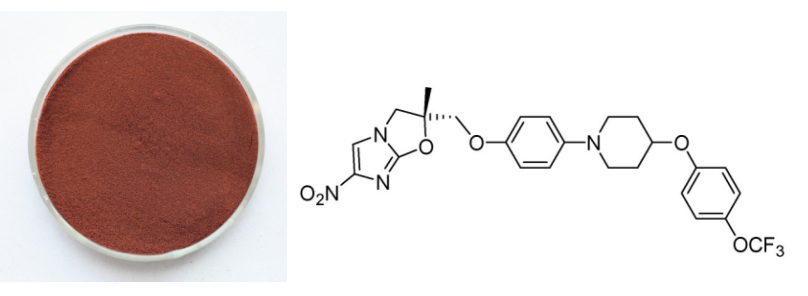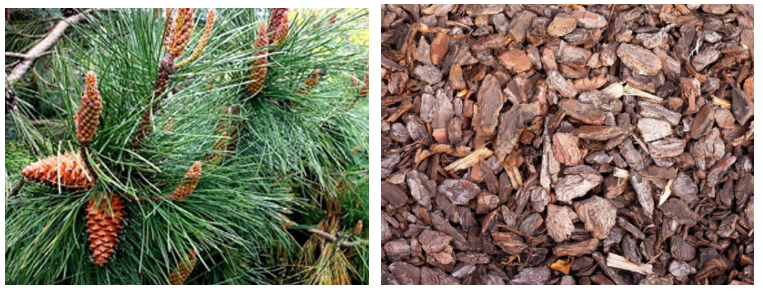Wholesale Distributors for Pine bark Extract Supply to El Salvador
Wholesale Distributors for Pine bark Extract Supply to El Salvador Detail:
[Latin Name] Pinus pinaster.
[Specification] OPC ≥ 95%
[Appearance] Red brown fine powder
Plant Part Used: Bark
[Particle size] 80Mesh
[Loss on drying] ≤5.0%
[Heavy Metal] ≤10PPM
[Storage] Store in cool & dry area, keep away from the direct light and heat.
[Shelf life] 24 Months
[Package] Packed in paper-drums and two plastic-bags inside.
[Net weight] 25kgs/drum
[What is Pine bark?]
Pine bark, botanical name Pinus pinaster, is a maritime pine native to southwest France that also grows in countries along the western Mediterranean. Pine bark contains a number of beneficial compounds that are extracted from the bark in a way that doesn’t destroy or damage the tree.
[How does it work?]
What gives pine bark extract its notoriety as a powerful ingredient and super antioxidant is that it’s loaded with oligomeric proanthocyanidin compounds, OPCs for short. The same ingredient can be found in grape seeds, the skin of peanuts and witch hazel bark. But what makes this miracle ingredient so amazing?
While OPCs found in this extract are mostly known for their antioxidant-producing benefits, these amazing compounds exude antibacterial, antiviral, anticarcinogenic, anti-aging, anti-inflammatory and anti-allergic properties. Pine bark extract can help reduce muscle soreness and may help improve conditions relating to poor circulation, high blood pressure, osteoarthritis, diabetes, ADHD, female reproductive issues, skin, erectile dysfunction, eye disease and sports stamina.
Seems like it must be pretty amazing, but let’s look closer. The list goes on a bit further, as the OPCs in this extract may “inhibit lipid peroxidation, platelet aggregation, capillary permeability and fragility, and to affect enzyme systems,” which basically means it may be a natural treatment for many serious health conditions, such as stroke and heart disease.
[Function]
- Lowers Glucose Levels, Improving Diabetic Symptoms
- Helps Prevent Hearing Loss and Balance
- Staves Off Infections
- Protects the Skin from Ultraviolet Exposure
- Decreases Erectile Dysfunction
- Reduces Inflammation
- Helps Increase Athletic Performance
Product detail pictures:

Related Product Guide:
With advanced technologies and facilities, strict high-quality handle, reasonable rate, superior services and close co-operation with prospects, we are devoted to furnishing the best price for our customers for Wholesale Distributors for Pine bark Extract Supply to El Salvador , The product will supply to all over the world, such as: French, India, Cannes, We have now a good reputation for stable quality goods, well received by customers at home and abroad. Our company would be guided by the idea of "Standing in Domestic Markets, Walking into International Markets". We sincerely hope that we could do business with car manufacturers, auto part buyers and the majority of colleagues both at home and abroad. We expect sincere cooperation and common development!
Professor Maureen McCann, Director of the Energy Center at Purdue University, addresses “A Roadmap for Selective Deconstruction of Lignocellulosic Biomass to Advanced Biofuels and Useful Co-Products” on February 11, 2013 as part of the Andlinger Center’s 2012-2013 Highlight Seminar Series.
ABSTRACT
Second-generation biofuels will be derived from lignocellulosic biomass using biological catalysis to use the carbon in plant cell wall polysaccharides for ethanol or other biofuels. However, this scenario is both carbon- and energy-inefficient. The major components of biomass are cellulose, hemicellulose and lignin. Biological conversion routes utilize only the polysaccharide moiety of the wall, and the presence of lignin interferes with the access of hydrolytic enzymes to the polysaccharides. Living micro-organisms, required to ferment released sugars to biofuels, utilize some sugars in their own growth and co-produce carbon dioxide. In contrast, chemical catalysis has the potential to transform biomass components directly to alkanes, aromatics, and other useful molecules with improved efficiencies. The Center for Direct Catalytic Conversion of Biomass to Biofuels (C3Bio) is a DOE-funded Energy Frontier Research Center, comprising an interdisciplinary team of plant biologists, chemists and chemical engineers. We are developing catalytic processes to enable the extraction, fractionation, and depolymerization of cellulose and hemicellulose coupled to catalytic transformation of hexoses and pentoses into hydrocarbons. Additional catalysts may cleave the ether bonds of lignin to release useful aromatic co-products or that may oxidize lignols to quinones. In a parallel approach, fast-hydropyrolysis is a relatively simple and scalable thermal conversion process. Our understanding of biomass-catalyst interactions require novel imaging and analysis platforms, such as mass spectrometry to analyze potentially complex mixtures of reaction products and transmission electron tomography to image the effects of applying catalysts to biomass and to provide data for computational modeling. By integrating biology, chemistry and chemical engineering, our data indicate how we might modify cell wall composition, or incorporate Trojan horse catalysts, to tailor biomass for physical and chemical conversion processes. We envision a road forward for directed construction and selective deconstruction of plant biomass feedstock.
BIOGRAPHY
Maureen McCann is the Director of Purdue’s Energy Center, part of the Global Sustainability Initiative in Discovery Park. She obtained her undergraduate degree in Natural Sciences from the University of Cambridge, UK, in 1987, and then a PhD in Botany at the John Innes Centre, Norwich UK, a government-funded research institute for plant and microbial sciences. She stayed at the John Innes Centre for a post-doctoral, partly funded by Unilever, and then as a project leader with her own group from 1995, funded by The Royal Society. In January 2003, she moved to Purdue University as an Associate Professor, and she is currently a Professor in the Department of Biological Sciences.
The goal of her research is to understand how the molecular machinery of the plant cell wall contributes to cell growth and specialization, and thus to the final stature and form of plants. Plant cell walls are the source of lignocellulosic biomass, an untapped and sustainable resource for biofuels production with the potential to reduce oil dependence, improve national security, and boost rural economies. She is also the Director of the Center for Direct Catalytic Conversion of Biomass to Biofuels (C3Bio), an interdisciplinary team of biologists, chemists and chemical engineers in an Energy Frontier Research Center funded by the US Department of Energy’s Office of Science.
Polyrachis Black Ant Extract is one of the most powerful natural tonics in Chinese Medicine. Although Black Ant Pills are growing in popularity, it is the Black Ant Extract Powder that is ideal to achieve maximum benefits from this superfood.
Buy VitaJing Black Ant Extract on Amazon.com here: https://www.amazon.com/dp/B01AZU8TG6
Good quality and fast delivery, it's very nice. Some products have a little bit problem, but the supplier replaced timely, overall, we are satisfied.






